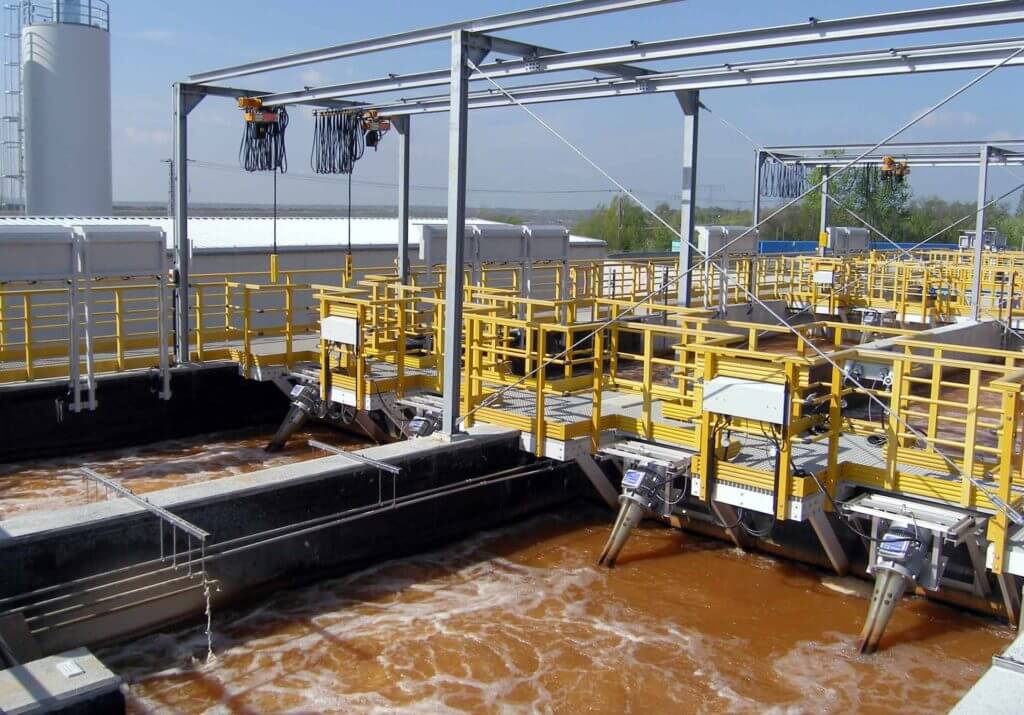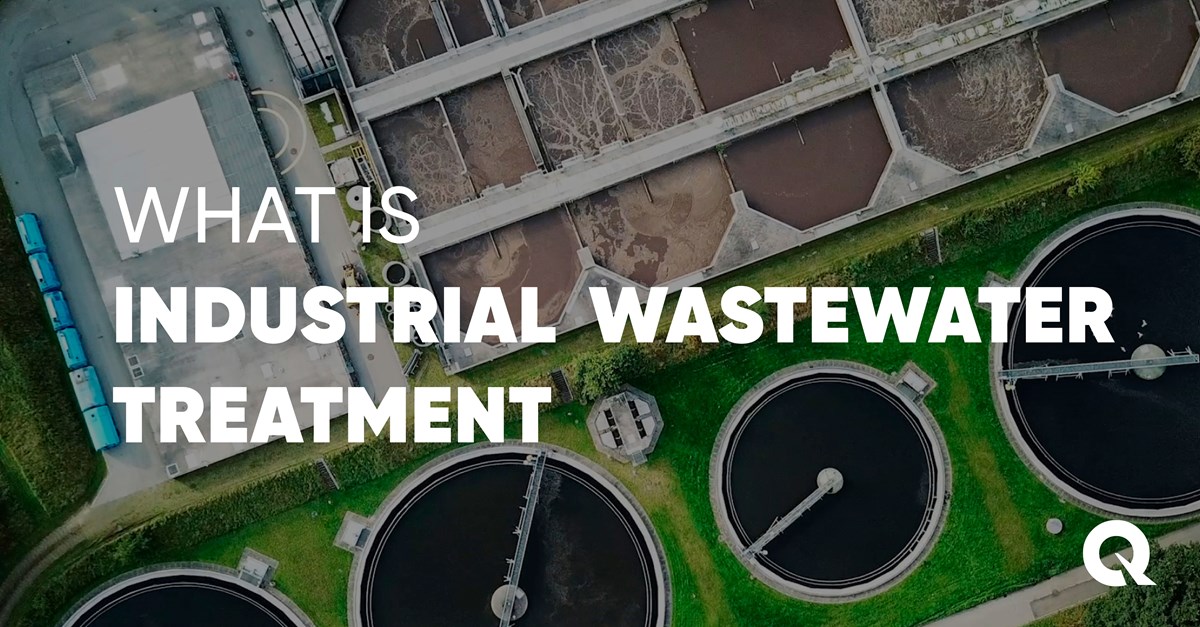Technologies and Advances in Hazardous Waste Water Treatment Technologies
The landscape of commercial wastewater treatment is undertaking a transformative shift, driven by developments that boost both performance and sustainability. As governing standards advance, the integration of AI and maker understanding right into wastewater administration systems assures to streamline procedures and make sure conformity.
Overview of Waste Water Treatment Technologies
Wastewater therapy technologies incorporate a variety of methods designed to eliminate pollutants from industrial effluents before their launch into the atmosphere. These technologies are critical for maintaining environmental equilibrium and making certain conformity with ecological laws. The key classifications of wastewater treatment consist of physical, chemical, and organic approaches, each offering distinct objectives based on the nature of the contaminants existing.

Biological treatment techniques use microbes to deteriorate organic matter, making them specifically reliable for organic-rich effluents. Techniques like activated sludge and biofilm reactors harness the natural deterioration capacities of microorganisms, leading to significant reductions in biochemical oxygen demand (FIGURE)
Advanced Purification Strategies
Advanced purification strategies stand for a vital development in the realm of industrial wastewater treatment, improving the efficiency of impurity removal processes. Industrial Waste Water Treatment. These methods encompass a variety of technologies, including microfiltration, ultrafiltration, nanofiltration, and turn around osmosis, which give consecutive obstacles for different bit sizes and chemical structures
Microfiltration and ultrafiltration utilize membrane systems to get rid of put on hold solids, germs, and larger organic particles, boosting the top quality of effluent before additional treatment. Nanofiltration bridges the void in between ultrafiltration and reverse osmosis, efficiently removing divalent ions and organic substances, hence reducing the load on downstream procedures.
Reverse osmosis provides the highest degree of filtration by enabling only water and tiny molecules to travel through its semi-permeable membrane layers, making it excellent for redeeming top notch water from industrial effluents. Recent innovations in membrane technology, consisting of the advancement of even more fouling-resistant and resilient products, have actually considerably enhanced operational effectiveness and reduced costs.
Incorporating these sophisticated filtration techniques not just boosts the general treatment procedure but likewise contributes to sustainability efforts by making it possible for water reuse and resource healing in commercial setups. (Industrial Waste Water Treatment)
Biological Treatment Innovations

Furthermore, the growth of engineered biological systems, such as membrane layer bioreactors (MBRs), combines biological treatment with innovative membrane purification. This combination enables greater effluent high quality and reduced impact, making it appropriate for space-constrained industrial centers. Developments in genetically engineered bacteria have actually likewise arised, improving the biodegradation of specific pollutants, such as pharmaceuticals and heavy steels, that are typically testing to eliminate.
In addition, the implementation of bioaugmentation approaches, where helpful microbes are introduced to boost the existing biological therapy procedures, has revealed promising outcomes in boosting treatment efficiency. These innovations collectively indicate a trend towards even more effective and lasting biological therapy methodologies that index can adapt to the advancing complexities of industrial wastewater streams. As markets proceed to focus on environmental compliance, these biological advancements will certainly play an important duty in wastewater management.

Source Healing Methods
In commercial settings, the assimilation of resource recovery techniques has become significantly important for enhancing sustainability and lessening waste. These methods concentrate on extracting beneficial materials and power from wastewater streams, thus changing potential toxins into recyclable resources.
One famous strategy is nutrition recuperation, where nitrogen and phosphorus, commonly existing in excess in wastewater, are recorded and exchanged plant foods. This not only decreases ecological impacts yet additionally gives a round economy service for agricultural applications. Furthermore, modern technologies such as anaerobic digestion permit for the conversion of organic waste into biogas, a renewable power resource that can offset fossil gas use in industrial procedures.
In addition, advanced filtering and membrane layer modern technologies facilitate the healing of commercial by-products such as metals and salts. These recuperated products can be rehabilitated right into manufacturing processes, decreasing the requirement for virgin resources.
Future Patterns in Drainage Monitoring
As industries increasingly focus on sustainability, the future of wastewater management is readied to go through considerable makeovers. Technical advancements, such as synthetic intelligence and artificial intelligence, will certainly allow a lot more reliable surveillance and monitoring of wastewater systems. These modern technologies can forecast upkeep requirements, enhance treatment processes, and enhance decision-making, ultimately lowering functional prices and ecological impact.
Moreover, the integration of round economy concepts will certainly play a critical duty in wastewater administration. Industries are expected to shift in the direction of systems that not just treat wastewater but also recover valuable sources, such as nutrients, water, and power. This transition will certainly decrease waste and promote the reuse of materials, straightening with worldwide sustainability goals.
Emerging therapy methods, such as membrane bioreactors and progressed oxidation processes, will additionally boost the effectiveness of wastewater therapy, permitting for better Visit Website effluents ideal for reuse. Furthermore, governing structures are likely to advance, highlighting more stringent criteria for wastewater discharge and encouraging sectors to embrace cutting-edge treatment solutions.
Final Thought
In conclusion, the advancement of industrial wastewater therapy innovations shows a considerable change in the direction of improved effectiveness and sustainability. Developments in innovative filtration strategies, biological treatments, and source recovery approaches highlight the industry's commitment to ecological stewardship. The integration of fabricated intelligence and machine discovering additionally maximizes these processes, making certain regulatory compliance and advertising a round economy. Continued innovations in these areas will play a critical role in shaping the future of wastewater monitoring and protecting important water sources.
The landscape of commercial wastewater therapy is undertaking a transformative change, driven by technologies that enhance both efficiency and sustainability.Wastewater therapy technologies encompass a range of methods developed to remove contaminants from industrial effluents before their launch right into the setting.Using the power of organic procedures has actually led to considerable advancements in the treatment of industrial wastewater.Additionally, the implementation of bioaugmentation methods, where valuable germs are presented to improve the existing biological therapy procedures, has actually shown promising outcomes in boosting therapy performance. These innovations jointly symbolize a pattern towards you could look here even more efficient and lasting biological treatment techniques that can adjust to the developing complexities of commercial wastewater streams.